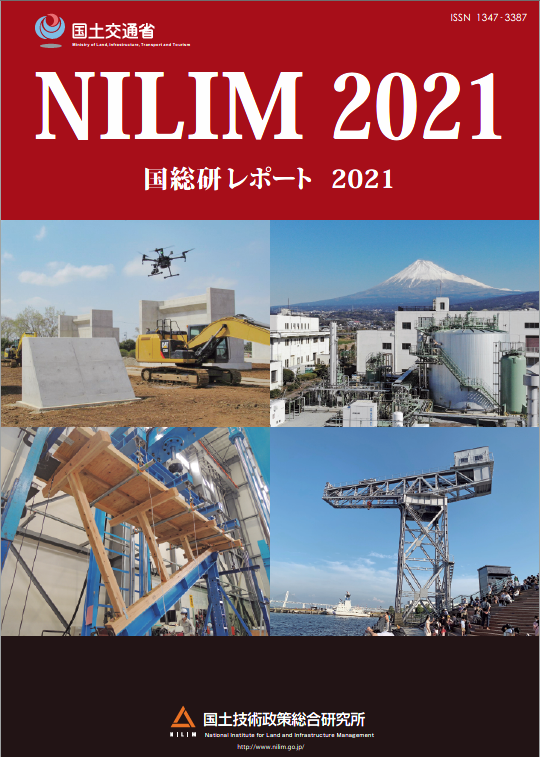2021 Annual Report of NILIM

| Message of Director-General |
| The Mission of NILIM: Research that Pursues the Essential by Focusing on Reality |
| Opening report |
| Messages from Departments and Centers of NILIM |
| 1. Reserch to support national resilience, safety, and security |
| 2. Research to support strong, sustainable economic growth |
| Survey of local governments on their intentions to introduce new technologies (to shift to smart cities) to solve urban problems |
| 3. Research to support community development that serves as a foundation for the good life |
| 4. Support for disaster response |
| 5. Technical consultation and technical support |
| Development of Strength Performance and Practical Structure Required for Bollards to be Installed on Sidewalks at Intersections |
| 6. Collection, analysis, management of data, return to society |
| Analysis of the Periodic Inspection Results of Sheds, Large Culverts, etc. |
| 7. Research Coordination |
| Technical cooperation |
| 8. International Research Activities |
| International Research Activities |